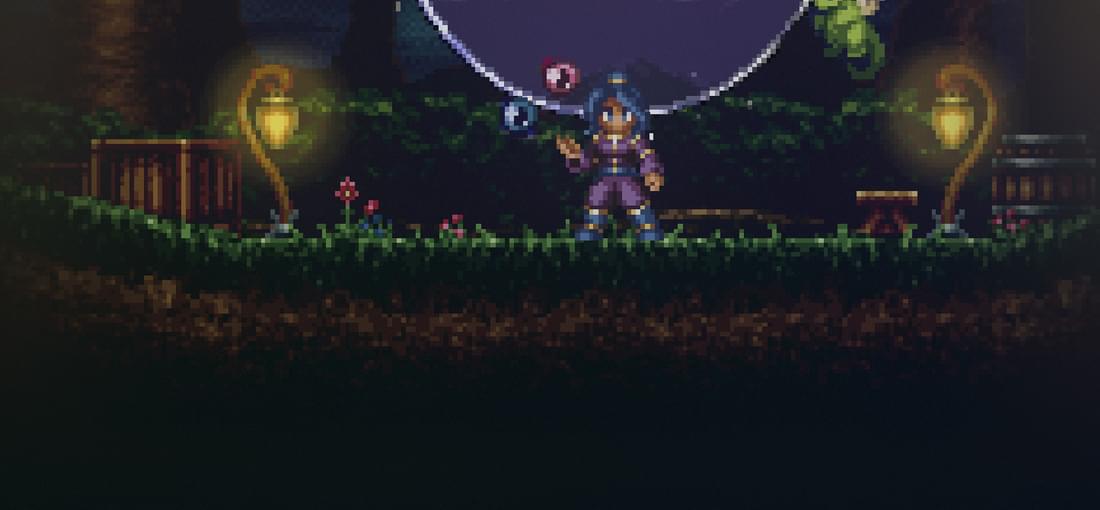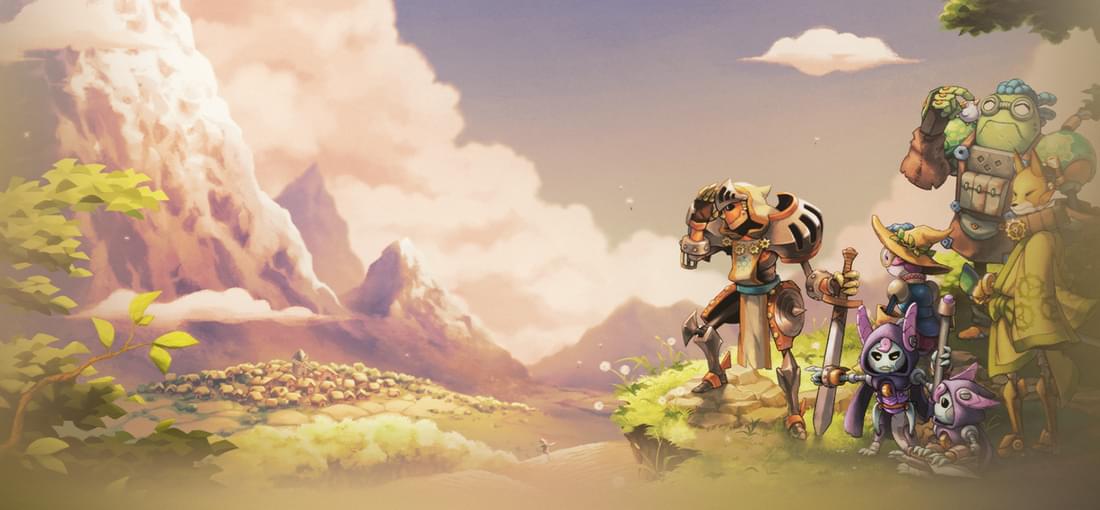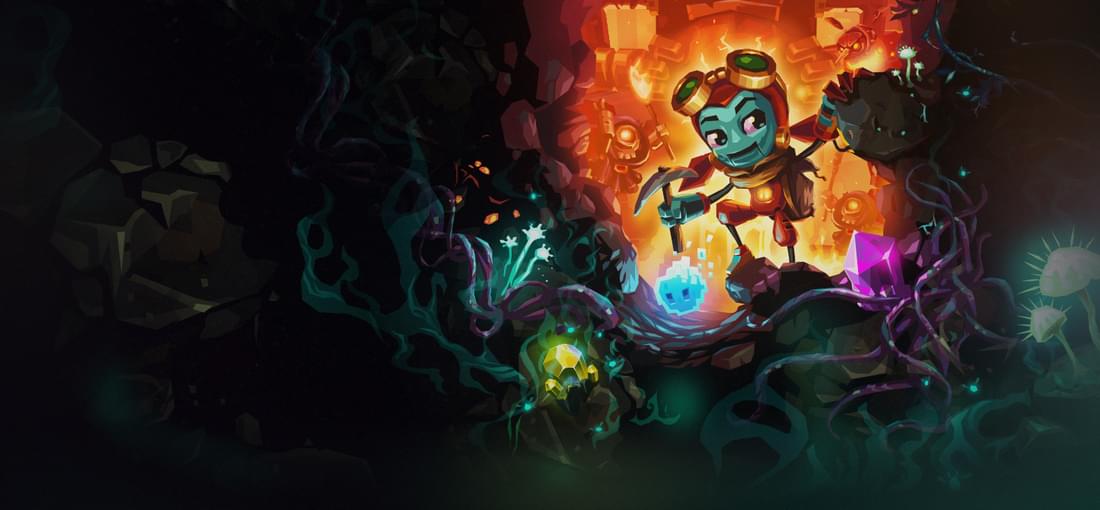


A game that answers the question, "What if Symphony of the Night — but Chrono Trigger?" Well, actually, it draws inspirations from way more games than that. (The back-and-forth between two maps thing feels a lot like A Link to the Past, for example.) It blends a lot of elements together well. Its visual style works for the game it's trying to be, its enemy design is clever at times, and it has a pretty satisfying level of rewarding exploration and backtracking. It's not that long — I finished my first playthrough in 9 hours — but I don't mark that against it. (Hollow Knight is not much longer, and Hollow Knight is one of the best games I've ever played.) However, given how short it is, it's far too easy to accidentally outlevel the enemies and bosses if you're playing on Normal difficulty, and there's one too many weapon orbs that are just a rehash of the first orb. Those things wouldn't stand out as much if the game were bigger, but as a game that's a relatively contained experience, they become noticeable. (Nightmare difficulty fixes one of those issues, if you're willing to play through it twice.) I like most of the characters, but I dislike the "backstory" they gave Nuvius, the evil emperor. It also seems like the demon siblings were originally planned to take up more space in the game, but they actually just disappear after you beat them. All of the endings even mention dealing with the demons still hanging around, when that feels like it could have been another quest for the player to take on — finishing what you started, in a way. The game still presents Lunais with interesting decisions in each ending, and each one feels "right" in a different way. At the same time, none of them are clean, perfect "happy" endings. So the story definitely has strong moments. All around solid game for Metroidvania fans.

Castlevania: Symphony of the Night is a historical game, and one that I have a great deal of personal affection for. So a game that claims to be its spiritual successor has some gargantuan shoes to fill, here - and Bloodstained: Ritual of the Night does its damndest to fill those shoes. In fairness, it knows exactly what it is. It knows it was made for fans of the game that coined the term "Metroidvania," for people who grew up playing the DS-era Castlevania games. The menus look like the menus from Symphony of the Night and sound like the menus from Lament of Innocence. The basic gameplay and shard system feel like Aria of Sorrow. The character design of the protagonist and her character arc are clearly inspired by Order of Ecclesia. Playing Ritual of the Night feels like **coming home**, in a way I can't explain to people who don't already know how much of a disappointment Castlevania: Lords of Shadow: the Mirror of Fate: the Quest for More Subtittles was, and why. Except... it's not so much a love letter to Castlevania as it is the old pro returning to form. This game was directed by Koji Igarashi, the assistant director of Symphony of the Night, and primary producer of the Castlevania series during the DS era I just referred to. As a gamer, as an enthusiast of this genre, I can't put into words how much I love this game. It plays like it was made for me, by people who know exactly what my preferences are and know exactly how the video game market has failed me for the past 20 years. As a critic, I find myself conflicted, because this game has some rough edges in places that it wouldn't have if Konami would have just bankrolled this and it was a proper Castlevania title. It's a beautiful game, but I've run into some visual and audio glitches. It's a fun game, but it doesn't really innovate on what basically this same team did 15 years ago. So I don't know. I love this game. I also know that Igarashi can do better. I hope that one day, he does.

Image & Form are, as a game studio, good at making short, tightly executed games populated by charming characters. Steamworld Quest is their attempt at a card-based RPG something akin to Slay the Spire. Your deck is determined by which characters you're bringing with you and which abilities you want to use for them. It's possible to win the game with the starting three characters without making too many changes to their decks if you want to treat it like a JRPG and grind out levels and gear upgrades, but if you prefer tinkering with your deck until it has just the right synergies and combos, you can get away with much weaker characters and fewer upgrades. So the gameplay is simple but fun, and the visual style is like the rest of the series but with a fantasy bent. I happen to like their art style, but you can judge that for yourself. The soundtrack is excellent - there aren't that many variations on the combat theme, but that's the only complaint I have, and the two main combat themes have probably the best use of marimba I have ever heard in a sweet rock jam. Like most of the Steamworld series, this isn't a very long game for its genre - about 20 to 25 hours your first play through. It has a small cast - I counted 11 characters that had more than 3 lines. But here's the thing - these characters are predictable, and this story isn't a whole lot better, but I still loved it. Armilly is clumsy, and charming, and heroic, and even though she embodies the expression "never meet your heroes," I empathize with her so hard. You'll probably see the final plot twist coming from a mile away, but it still hit me in the feels. I know it's cheesey, but it just makes me a big, blubbery mess that she doesn't see how much better she is than the people she's measuring herself against. In a genre that seems mostly filled with stories about unlikely heroes, this is a story about a likely hero and the friends she drags along for the ride. And I love it for that.

SteamWorld Dig 2 is an improvement upon the original in every way that matters. The art is a little more polished. The upgrade system is more flexible without being confusing. The world expands in a less linear fashion, with reasons to backtrack into previous areas after getting new upgrades. And the story does a better job of making you care about the protagonist and the characters she meets along the way. SteamWorld Dig 2 strikes an excellent balance between platforming, exploration, and resource collection/management. It does a good job of improving your mobility gradually. It gives you enough upgrade cogs to feel like you can do lots of cool things, but not quite enough to make you feel like you can do everything. Combat is limited, which is good, because you can't attack while in the air, and your pickaxe is very short ranged. (Later in the game the pressure cannon becomes a much better weapon, but you have to unlock many upgrades before you have enough steam to really lean on it as your go-to weapon.) Image and Form do a good job of taking a genre and turning it into good gameplay, but they seem to put less emphasis on content length. The SteamWorld Dig series are their attempts at the Metroidvania genre with an old-west/steampunk theme. The first entry clocks in at 5 to 7 hours for a first time playthrough, the second title (this one) clocks in around 8 to 10 hours. It's a very compelling and fun 8 to 10 hours, and it's hard to argue that 8 hours of high-quality entertainment isn't worth $20; after all, I spend more than that just taking my partner to see a movie. It does, however, leave me wishing there were more ruins beneath El Machino to explore.